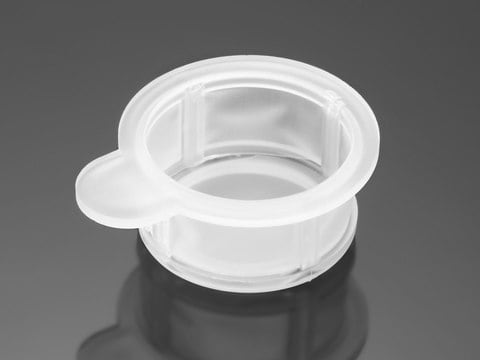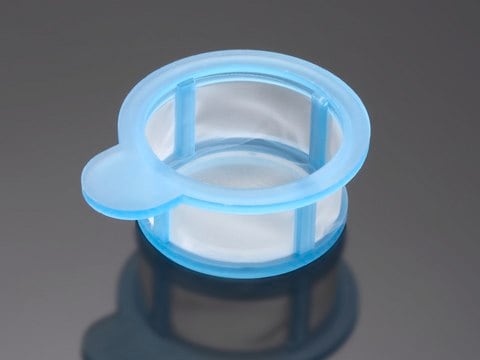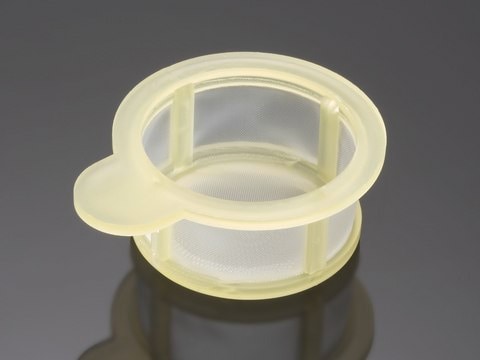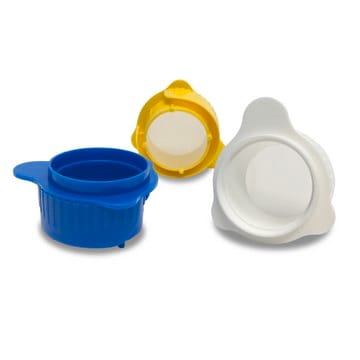CLS431751
Corning® cell strainer
pore size 70 μm, white, sterile, pkg of (individually wrapped), pack of 50 ea, Corning 431751
Synonym(s):
Cell Strainer
Sign Into View Organizational & Contract Pricing
All Photos(1)
About This Item
UNSPSC Code:
41104913
NACRES:
NB.24
Recommended Products
material
Nylon
white
sterility
sterile
packaging
pack of 50 ea
pkg of (individually wrapped)
manufacturer/tradename
Corning 431751
pore size
70 μm
Looking for similar products? Visit Product Comparison Guide
General description
Corning® 70μm Cell Strainer is a sterile, easy-to-use device for rapidly isolating primary cells to consistently obtain a uniform single-cell suspension from tissues.
Application
Corning® 70μm Cell Strainer is a faster, easier alternative to gauze filtration. It is ideal for preparation of flow cytometry samples, including:
- Single cell suspensions of blood cells from marrow, pancreas, thymus, tonsil, and lymph nodes
- Stem cells, tissue-derived cells, and cancer cells
- Preparation of specimens for primary cell cultures and immunogens
- Preparation of freezing stocks
- Filtering agglutinative proteins produced in inactivation serum
Features and Benefits
- Strong nylon mesh with 70- micron pores for optimal performance in a variety of applications
- Evenly spaced mesh pores providing consistent and reliable results
- Conveniently accessible in individual packaging
- Extended lip on strainer enables aseptic handling with forceps
- Molded color-coded polypropylene frame with tab enables easy handling and identification
- Fits all major brands of 50mL conical tubes
- Disposable, easy-to-use, inexpensive, maintains sample integrity
- Sterilized by γ−irradiation, noncytotoxic
Legal Information
Corning is a registered trademark of Corning, Inc.
Certificates of Analysis (COA)
Search for Certificates of Analysis (COA) by entering the products Lot/Batch Number. Lot and Batch Numbers can be found on a product’s label following the words ‘Lot’ or ‘Batch’.
Already Own This Product?
Find documentation for the products that you have recently purchased in the Document Library.
Customers Also Viewed
Josefine Tratwal et al.
Frontiers in endocrinology, 11, 480-480 (2020-10-20)
The bone marrow (BM) exists heterogeneously as hematopoietic/red or adipocytic/yellow marrow depending on skeletal location, age, and physiological condition. Mouse models and patients undergoing radio/chemotherapy or suffering acute BM failure endure rapid adipocytic conversion of the marrow microenvironment, the so-called
Kelly C Santos Roballo et al.
Biomaterials, 209, 1-9 (2019-04-26)
Segmental injuries to peripheral nerves (PNs) too often result in lifelong disability or pain syndromes due to a lack of restorative treatment options. For injuries beyond a critical size, a bridging device must be inserted to direct regeneration. PN allografts
Lamba Omar Sangaré et al.
Cell host & microbe, 26(4), 478-492 (2019-10-11)
Toxoplasma can reach distant organs, especially the brain, leading to a lifelong chronic phase. However, genes involved in related in vivo processes are currently unknown. Here, we use focused CRISPR libraries to identify Toxoplasma genes that affect in vivo fitness. We focus
Joanna Kalucka et al.
Cell, 180(4), 764-779 (2020-02-16)
The heterogeneity of endothelial cells (ECs) across tissues remains incompletely inventoried. We constructed an atlas of >32,000 single-EC transcriptomes from 11 mouse tissues and identified 78 EC subclusters, including Aqp7+ intestinal capillaries and angiogenic ECs in healthy tissues. ECs from
Paul Yenerall et al.
Cell chemical biology, 27(1), 105-121 (2019-12-31)
RUVBL1 and RUVBL2 (collectively RUVBL1/2) are essential AAA+ ATPases that function as co-chaperones and have been implicated in cancer. Here we investigated the molecular and phenotypic role of RUVBL1/2 ATPase activity in non-small cell lung cancer (NSCLC). We find that RUVBL1/2
Our team of scientists has experience in all areas of research including Life Science, Material Science, Chemical Synthesis, Chromatography, Analytical and many others.
Contact Technical Service










